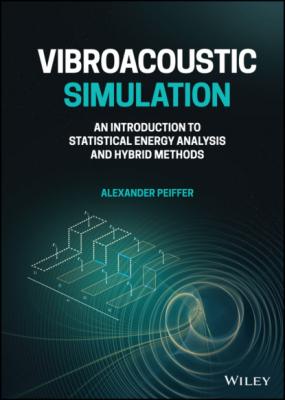Vibroacoustic Simulation. Alexander Peiffer
Читать онлайн.| Название | Vibroacoustic Simulation |
|---|---|
| Автор произведения | Alexander Peiffer |
| Жанр | Отраслевые издания |
| Серия | |
| Издательство | Отраслевые издания |
| Год выпуска | 0 |
| isbn | 9781119849865 |
2.7.3.1 Impedance Concept
The radiation impedance of the piston is calculated from the pressure averaged over the surface related to the piston velocity vz. As shown by Lerch and Landes (2012) the mechanical impedance of the piston due to radiation is given by
According to equation (2.141) assuming a constant velocity vz over the surface A the pressure is
Thus, we get the pressure at r from integrating the contribution from the rest of the piston in circles of radius s. The angle integration over φ0 runs from 0 to 2π. From every angle φ0 follows the integration limits smax of the second integral.
Using those limits gives
Inserting equation (2.149) into (2.146) leads to the expression
Figure 2.13 Surface integration over piston for radiation impedance. Source: Alexander Peiffer.
Running through quite a lot of algebraic modifications we get the expression for the impedance of a piston
or
H1(z) is the Hankel function of first order. In Figure 2.14 the real and imaginary parts of the acoustic radiation impedance are compared to those of the pulsating sphere. Both sources have a similar shape except some waviness for the piston resulting from interference effects from the integration over the piston surface. For large kR the impedance is real for both radiators and approaches the acoustic impedance of a plane wave z0=ρ0c0.
Figure 2.14 Acoustic radiation impedance of the piston. Source: Alexander Peiffer.
With Equation (2.87) the radiated power of a piston of source strength Q=πR2vz is
The main use of Equation (2.153) is that the required velocity to achieve (or prevent) a certain sound power can be calculated from it, for example if one must define the boundary condition for a radiating piston in simulation software and only the radiated power is known.
2.7.3.2 Inertia Effects
The Bessel functions can be approximated by a series in 2kR taking the first series term of both functions (Jacobsen, 2011)
This expression is valid for ka<0.5. From the imaginary part we get for the mass
Assuming a cylindrical volume V=πR2lc of the fluid above the piston we can calculate the length of the moving mass cylinder to be
meaning that at low frequencies the piston is moving a fluid layer of 0.85 times the radius acting as an inertia without radiation.
2.7.4 Power Radiation
For
